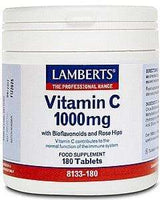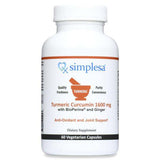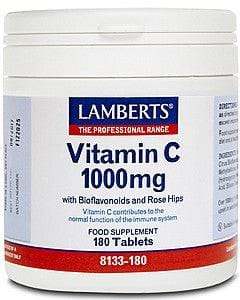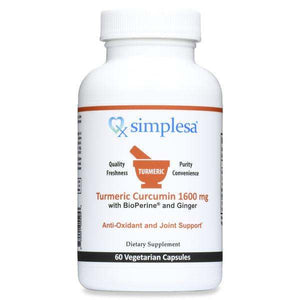Ulcer on Tonsil: Causes and Treatment

Related products
The tonsils are two lymph nodes on bilateral sides of the back of the throat and they are important to our immune system. The primary purpose of the tonsils is to prevent viruses and bacteria from entering the body through the mouth and nose. But at times tonsils can be trouble makers themselves when they have ulcers or sores. When present, tonsil ulcers make swallowing difficult.
Ulcer on tonsils can be caused by multiple factors some of which include bacterial infections like Streptococcus (strep throat); viral infections like Mononucleosis and Herpes Simplex Virus which weakens the immune system and increases susceptibility to oral health problems; deficiencies, particularly iron deficiency; tonsillitis, which inflames the tonsils and makes them more susceptible to other problems; etc.
Diagnosing early is crucial because it aids the treatment strategy more effectively. "Signs shouldn't be ignored," cautions Dr. Smith of New York City's famous ENT speciality hospital. Depending on the degree of difficulty the patient may be experiencing at the time, interventions can involve both medication and surgery. "Early detection makes way for effective treatments whereas ignoring symptoms worsens the condition severely thus complicating matters further ahead."
What is Ulcer on Tonsil?

Ulcer on tonsil is any unpleasant sore or wound that appears on the tonsils. It usually starts as a small reddish lump, and then proceeds to grow into an open lesion that is inflamed and at times have surrounding white or yellow discoloration.
The pain associated with ulcers on tonsils makes it hard to swallow. It is also associated with other symptoms like fever, halitosis (bad breath), ear pain, and swollen neck glands.
As stated by Boston Medical Center's famous otolaryngologist Dr. Johnson, "an ulcerated tonsil isn't mere irritation rather indicates a greater underlying issue the body is fighting against." Therefore, in order to address the underlying problem and ultimately prevent further complications from arising, any oral lesions of any kind—especially those that impact the area surrounding the throat—need to be treated by a doctor very once.
Causes
Tonsil ulceration is mostly brought on by a number of underlying medical disorders. These are the main reasons:
Viral Infections
Viruses are microscopic creatures that often cause disease by entering healthy cells. For instance, the Epstein-Barr virus is the primary cause of infectious mononucleosis, which frequently results in tonsillar ulcers. Similar to this, painful blisters or open sores across the mouth, including covering the tonsils, are the hallmark of oral herpes, which is usually brought on by the Herpes Simplex Virus type 1 (HSV-1).
Bacterial Infections
Certain kinds of bacteria provide a significant risk of developing throat ulcers, particularly if you already suffer from a condition like strep throat, which is caused by the Streptococcus pyogenes bacteria. This infection not only inflames the pharynx but also extends to other tissues, including the tonsils, resulting in one or more of those painful oral cavity sensations.
Fungal Causes
Oral thrush, a common fungal disease, is marked by thick white patches that cover the tonsils (the lymph nodes on either side of the mouth) and spread up to the uppermost layers of skin. It typically begins beneath the tongue and gradually spreads to other areas if therapy is not obtained elsewhere. The Candida fungus, which mostly causes these infections in the background, multiplies rather quickly under the right conditions and finally produces ulcers.
Symptoms
Being able to identify the symptoms of tonsil ulcers helps with early detection and prompt treatment. Symptoms of ulcer on tonsil include:
- Sore throat: A persistent, scratchy pain in the back of the throat is the most common sign
- Difficulty Swallowing or dysphagia: Pain or discomfort during swallowing is typically brought on by inflammation and oedema associated with ulcers.
- Voice Change: Hoarseness, changes in voice tone, or even complete voice loss may result from extensive inflammation that goes beyond the tonsils.
- Ear Pain: Numerous research studies that are currently accessible globally state that an infection that spreads from the tonsils to nearby tissues is the cause of otalgia, or referred pain in the ears.
- Visibly Ulcerated Tonsil: When examined visually with a mirror, for example, the appearance of a prominent, raw-looking white patch signals the possibility of ulcer formation right there.
- Fever and Fatigue: Frequently accompanied by sensations of general weakness and malaise, low-grade fever indicates a continued systemic defence against invasive microorganisms, confirming the existence of a problem within the system as a whole.
How to diagnose ulcers on tonsils
The first step in diagnosing tonsil ulcers is a thorough medical examination. Your doctor could do the following:
Oral Examination: The tonsil and throat areas need to be physically inspected for any visible sores, inflammations, or discolourations.
Examining the medical history of the patient: By knowing about past illnesses, doctors can determine whether an ongoing infection is the cause of ulcerated tonsils.
Several laboratory tests are performed to ensure a proper diagnosis:
Throat Swab Test (Culture): In order to obtain a sample for microbiological testing, the doctor swabs the back of the patient's throat. This test looks for specific bacteria or viruses that might be causing ulcers in the tonsils.
The complete blood count, or CBC, counts the many components of blood, including platelets and red blood cells, and gives information on the overall health of the body, especially how effectively it is presently able to fight against diseases;
The monospot test detects antibodies and the body's response against Epstein-Barr virus which is a major contributor to the development of mononucleosis and is often associated with it.
Treatment
Reducing symptoms while addressing the underlying cause is the primary objective of tonsil ulcer treatment. Three general approaches are used:
- Medications: Depending on which is suspected, antiviral drugs may be prescribed for viral infections and antibiotics for bacterial infections.
- Over-the-Counter (OTC) pain relievers and lozenges: They offer temporary relief from the discomfort and anguish these throat sores cause.
- Home remedies: Consuming a lot of warm liquids, such herbal tea or soup, avoiding spicy foods, and gargling with salt water can all help soothe sensitive throat tissue and hasten the healing process in addition to medications.
In extreme situations where recurrent episodes persist despite conservative measures or when an obstruction prevents normal breathing or functioning, surgery under expert supervision becomes necessary, as long as the decisions are made in the patient's best interest after all attempts have had the desired effect.
Although it is considered a last resort, tonsillectomy—the surgical removal of the tonsils—works well for persistent problems involving this area.
When To See Your Doctor

Seeing a doctor becomes essential when specific symptoms and indicators indicate more serious underlying conditions. Some significant triggers are as follows:
- tonsil ulcers or a sore throat that doesn't go away after two weeks.
- The severe pain these blisters produce makes it difficult to swallow or eat.
- Experiencing a fever and sore throat that are not relieved by natural means
- Abrupt weight loss and fatigue may indicate systemic problems.
According to Dr. Winkler, senior ENT specialist at John Hopkins Hospital USA, "Timely medical consultation helps prevent an escalation of issues related to oral health," highlighting the importance of prompt medical intervention.
Summary
Tonsil ulcers are painful sores that make swallowing challenging and are caused by bacterial or viral infections. The diagnosis process includes an oral examination, a review of the patient's medical history, and laboratory tests such as throat swabs and blood counts. Treatment includes over-the-counter pain relievers for symptom relief, medication specific to the source of the infection, and home remedies such as gargles with warm salt water. In extreme cases where therapy is unsuccessful, surgery—more especially, tonsillectomy—becomes a warranted last resort. Due to safety issues, it is crucial to seek professional help as soon as possible rather than self-medicating.
Frequently Asked Questions
What causes ulcers on the tonsils?
Tonsil ulcers, which are usually brought on by bacterial or viral illnesses, are frequently linked to Herpes Simplex Virus and Mononucleosis. Stress, iron deficiency, and some medications may also be factors.
How to get rid of ulcers on tonsil?
Treating tonsil ulcers typically involves a combination of prescription medications, over-the-counter pain relievers to reduce symptoms, and soothing home remedies like salt water gargles, depending on the kind of infection (bacterial or viral).
What antibiotic is good for tonsillitis ulcers?
When bacterial infections produce ulcers, antibiotics are effective. Amoxicillin and Penicillin are commonly administered due to their effectiveness against the Streptococcus bacteria, which is the typical cause of many throat problems.
How long does it take for a tonsil ulcer to go away?
The time required for a tonsil ulcer to heal might vary significantly depending on its severity and underlying cause, although it typically takes 1-2 weeks if treated appropriately and under careful medical supervision.





































 Rated Excellent by 26,523+ Reviews
Rated Excellent by 26,523+ Reviews